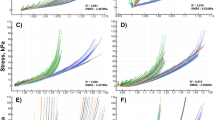Abstract
Computational blood flow and vessel wall mechanics simulations for vascular structures are becoming an important research tool for patient-specific surgical planning and intervention. An important step in the modelling process for patient-specific simulations is the creation of the computational mesh based on the segmented geometry. Most known solutions either require a large amount of manual processing or lead to a substantial difference between the segmented object and the actual computational domain. We have developed a chain of algorithms that lead to a closely related implementation of image segmentation with deformable models and 3D mesh generation. The resulting processing chain is very robust and leads both to an accurate geometrical representation of the vascular structure as well as high quality computational meshes. The chain of algorithms has been tested on a wide variety of shapes. A benchmark comparison of our mesh generation application with five other available meshing applications clearly indicates that the new approach outperforms the existing methods in the majority of cases.
Similar content being viewed by others
References
Audette M, Delingette H, Fuchs A, Koseki Y, Chinzei K (2003) A procedure for computing patient-specific anatomical models for finite element-based surgical simulation. In: 7th annual conference of the international society for computer aided surgery (ISCAS’03)
Bourouchaki H, Hecht F, Saltel E, George P (1995) Reasonably efficient delaunay based mesh generator in three dimensions. In: Proceedings of the 4th international meshing roundtable, pp 3–14
Cebral J, Castro M, Appanaboyina S, Putman C, Millan D, Frangi A (2005) Efficient pipeline for image-based patient-specific analysis of cerebral aneurysm hemodynamics: technique and sensitivity. IEEE Trans Med Imaging 24:457–467
Cebral J, Löhner R (2001) From medical images to anatomically accurate finite element grids. Int J Numer Methods Eng 51:985–1008
Cebral J, Löhner R, Soto O, Choyke P, Yim P (2002) Image-based finite element modeling of hemodynamics in stenosed carotid artery. In: Proceedings of SPIE medical imaging, vol 4683, pp 297–304
Delingette H, Hébert M, Ikeuchi K (1992) Shape representation and image segmentation using deformable surfaces. Image Vis Comput 10:132–44
Di Martino E, Guadagni G, Fumero A, Ballerini G, Spirito R, Biglioli P, Redaelli A (2001) Fluid - structure interaction within realistic three-dimensional models of the aneurysmatic aorta as a guidance to assess the risk of rupture of the aneurysm. Med Eng Phys 23:647–655
Ferrant M, Nabavi A, Macq B, Jolesz F, Kikinis R, Warfield S (2001) Registration of 3D intraoperative MR images of the brain using a finite-element biomechanical model. IEEE Trans Med Imaging 20:1384–1397
Fillinger M, Marra S, Raghavan M, Kennedy F (2003) Prediction of rupture risk in abdominal aortic aneurysm during observation: wall stress versus diameter. J Vasc Surg 37:724–732
Fillinger M, Raghavan M, Marra S, Cronenwett J, Kennedy F (2002) In vivo analysis of mechanical wall stress and abdominal aortic aneurysm risk. J Vasc Surg 26:589–597
Freitag L, Plassmann P (2000) Local optimisation-based simplicial mesh untangling and improvement. Int J Numer Methods Eng 49:109–125
Gérard O, Collet Billon A, Rouet J-M, Jacob M, Fradkin M, Allouche C (2002) Efficient model-based quantification of left ventricular function in 3D echocardiography. IEEE Trans Med Imaging 21:1059–1068
Hartmann U, Kruggel F (1998) A fast algorithm for generating tetrahedral 3D finite element meshes from magnetic resonance tomograms. In: Proceedings of the IEEE workshop on medical image analysis
Hilton A, Illingworth J (1997) Marching triangles: Delaunay implicit surface triangulation. Technical report, University of Surrey
Löhner R (1996) Regridding surface triangulations. J Comput Phys 126:1–10
Lorensen W, Cline H (1987) Marching cubes: A high resolution 3D surface construction method. Comput Graph 21:163–169
Mohamed A, Davatzikos C (2004) Finite element mesh generation and remeshing from segmented medical images. In: Proceedings of the 2004 IEEE international symposium on biomedical imaging pp 420–423. IEEE,Arlington
Myers J, Moore J, Ojha M, Johnston K, Ethier C (2001) Factors influencing blood flow patterns in the human right coronary artery. Ann Biomed Eng 29:109–120
Perktold K, Hofer M, Rappitsch G, Loew M, Kuban B, Friedman M (1998) Validated computation of physiologic flow in a realistic coronary artery branch. J Biomech 31:217–228
Quatember B, Mühlthaler H (2003) Generation of CFD meshes from biplane angiograms: an example of image-based mesh generation and simulation. Appl Numer Math 46:379–397
Schmidt J, Johnson C, Eason J, McLeod R (1994) Applications of automatic mesh generation and adaptive methods in computational medicine. Springer, Berlin Heidelberg New york
Seveno E (1997) Towards an adaptive advancing front method. In: Proceedings of the 6th international meshing roundtable, pp 349–360
Shewchuk J (2002a) Constrained delaunay tetrahedralizations and provably good boundary recovery. In: Proceedings of the 11th international meshing roundtable, pp 193–204
Shewchuk J (2002b) What is a good linear element? Interpolation, conditioning, and quality measures. In Proceedings of the 11th international meshing roundtable, pp 15–18
Steinman D, Milner J, Norley C, Lownie S, Holdsworth D (2003) Image-based computational simulation of flow dynamics in a giant intracranial aneurysm. Am J Neuroradiol 24:559–566
Steinman D, Thomas J, Ladak H, Milner J, Rutt B, Spence J (2002) Reconstruction of carotid bifurcation hemodynamics and wall thickness using computational fluid dynamics and MRI. Mag Reson Med 47:149–159
Sullivan J, Charron G, Paulsen K (1997) A three-dimensional mesh generator for arbitrary multiple material domains. Finite Elem Anal Des 25:219–241
Ulrich D, van Rietbergen B, Weinans H, Rüegsegger P (1998) Finite element analysis of trabecular bone structure: a comparison of image-based meshing techniques. J Biomech 31:1187–1192
Vlachos A, Peters J, Boyd C, Mitchell J (2001) Curved PN triangles. In: Proceedings of the ACM symposium on interactive 3D graphics, pp 159–166
Wolters B, Rutten M, Schurink G, Kose U, de Hart J, van de Vosse F (2005) Towards model-based rupture risk assesment of abdominal aortic aneurysms. Med Eng Phys 27:871–883
Author information
Authors and Affiliations
Corresponding author
Rights and permissions
About this article
Cite this article
Putter, S.d., Vosse, F.N.v.d., Gerritsen, F.A. et al. Computational Mesh Generation for Vascular Structures with Deformable Surfaces. Int J CARS 1, 39–49 (2006). https://doi.org/10.1007/s11548-006-0004-1
Published:
Issue Date:
DOI: https://doi.org/10.1007/s11548-006-0004-1




